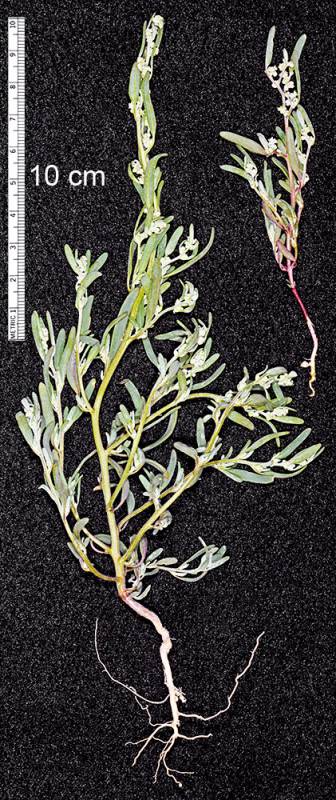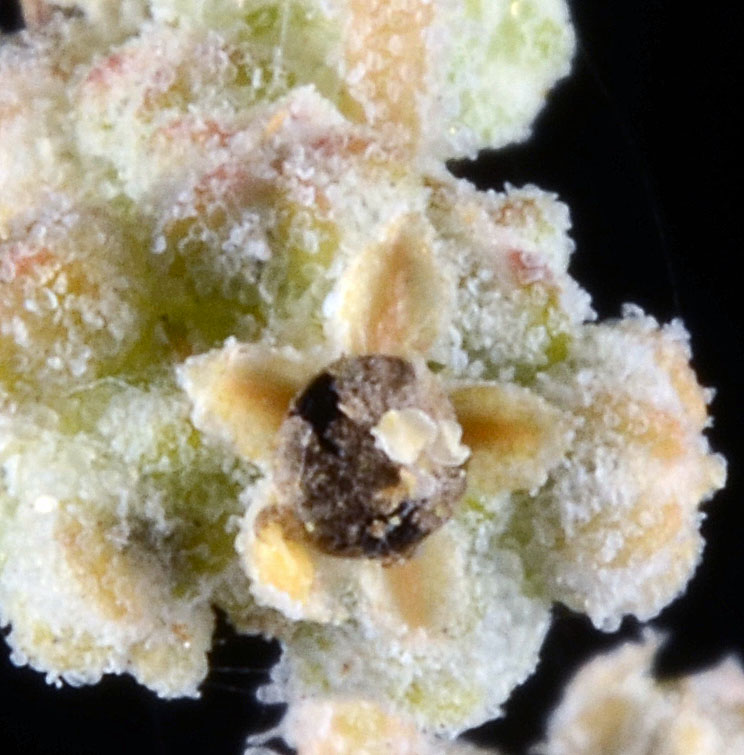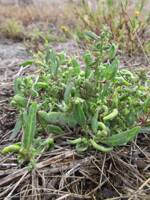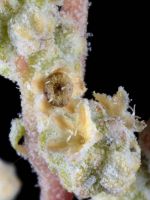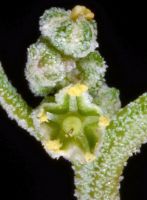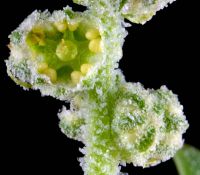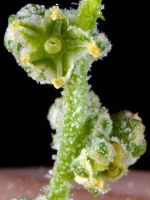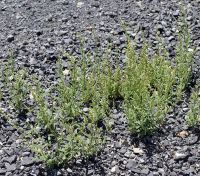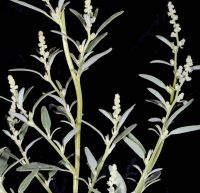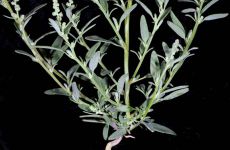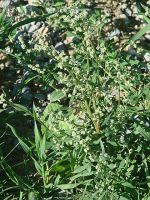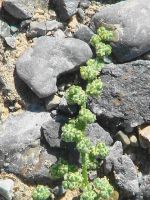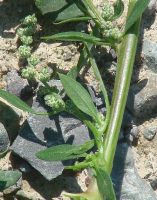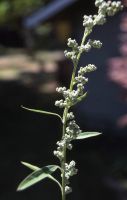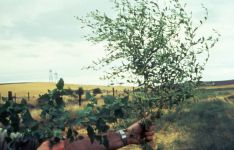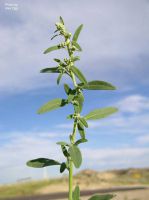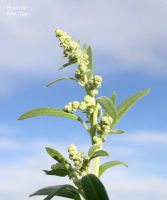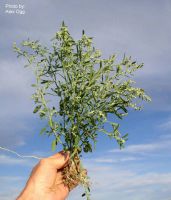Distribution: Occurring east of the Cascades crest in Washington; Alaska to Baja California, east to the Rocky Mountains and Great Plains.
Habitat: Sagebrush desert and dry grasslands.
Flowers: May-August
Origin: Native
Growth Duration: Annual
Conservation Status: Not of concern
Pollination: Wind
Erect, simple to freely-branched annual, 2-6 dm. tall, usually grayish with a mealy coating.
Leaves alternate, linear to narrowly oblong, the blades entire, 1-nerved, 1.5-4 cm. long and under 4 mm. wide, glabrous but pale above, gray beneath with a dense, mealy coating, narrowed to a short petiole.
Flowers glomerate in terminal and sub-terminal panicles of short spikes; perianth 5-cleft nearly to the base, the lobes developing a prominent mid-ridge; stamens 5, opposite the perianth lobes; styles 2.
The wall of the utricle readily separating from the smooth, shiny seed.
Publication: Proc. Amer. Acad. Arts. 9: 94. 1874.
Chenopodium leptophyllum (Nutt. ex Moq.) S. Watson var. leptophyllum [HC]
PNW Herbaria: Specimen records of Chenopodium leptophyllum in the Consortium of Pacific Northwest Herbaria database
WA Flora Checklist: Chenopodium leptophyllum checklist entry
OregonFlora: Chenopodium leptophyllum information
E-Flora BC: Chenopodium leptophyllum atlas page
CalPhotos: Chenopodium leptophyllum photos


